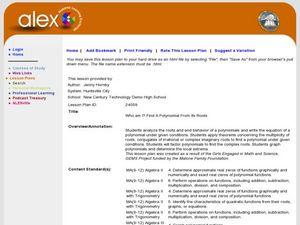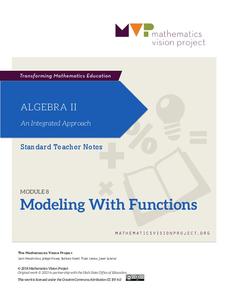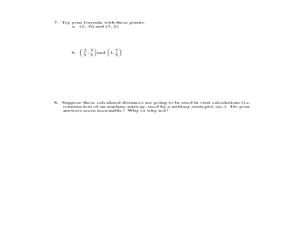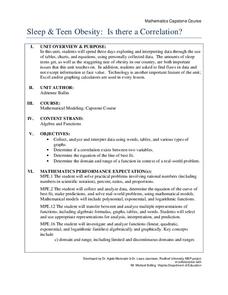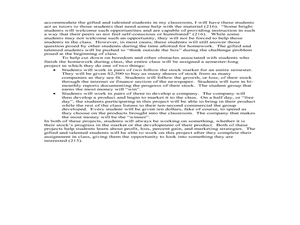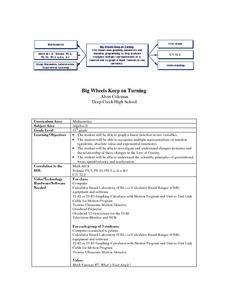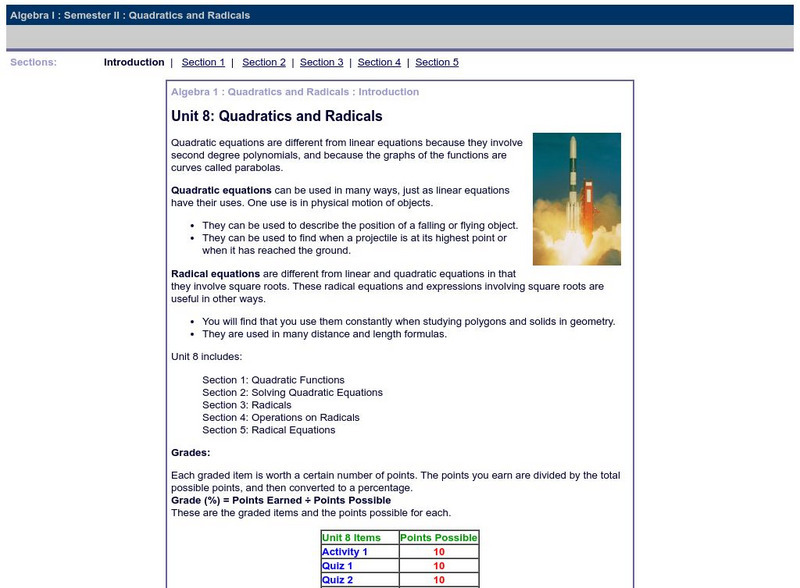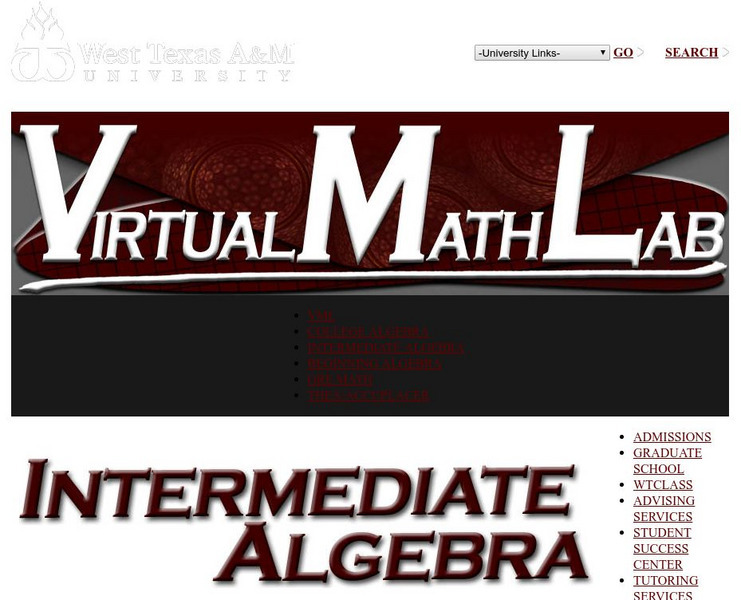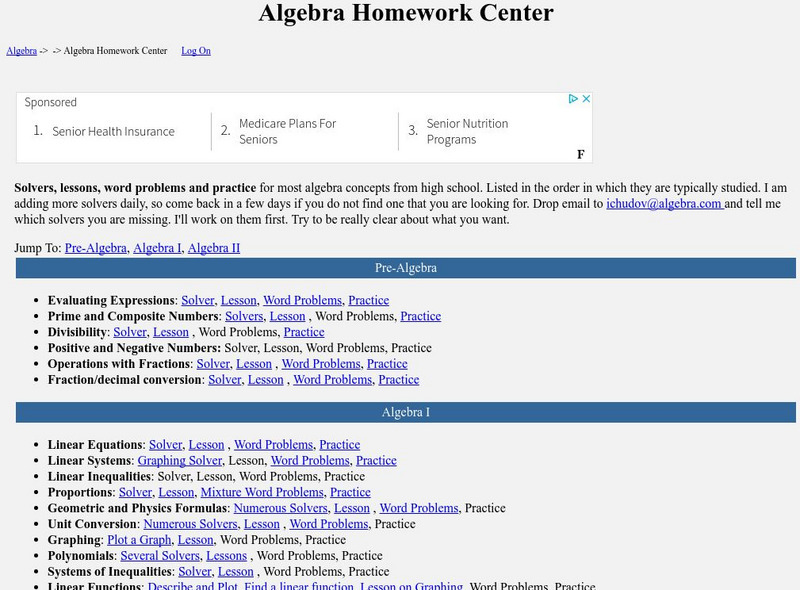West Contra Costa Unified School District
Polynomial Division
Multiply the ways your scholars can find the quotient with polynomial division. A lesson introduces polynomial division via long division, synthetic division, generic area model, and using the definition of division. Learners then...
Curated OER
Who am I? Find A Polynomial From Its Roots
High schoolers generate the equation of a polynomial given its roots and the end behavior of the function. They need to apply theorems concerning the multiplicity of roots, conjugates of irrational or imaginary roots to find a...
Texas Instruments
Expanding - Using CAS
Young scholars explore binomial multiplication. They use a TI-nspire handheld to investigate the relationship between the binomial multiplication problem and the resulting trinomial.
Curated OER
How Long Can You Go?
Eighth graders examine the usefulness of a line of best fit by collecting and graphing data, using a graphing calculator to determine the line of best fit, and making a variety of predictions. They watch a video, then design a...
Mathematics Vision Project
Module 8: Modeling With Functions
Sometimes there just isn't a parent function that fits the situation. Help scholars learn to combine function types through operations and compositions. Learners first explore a new concept with an introductory activity and then follow...
Alabama Learning Exchange
As If Numbers Weren't Complex Enough Already!
The class explores the concept of complex numbers on a website to generate their own Mandelbrot sets. They will practice performing operations with complex numbers and then to get a visual understanding, graph the absolute value of a...
Curated OER
Human Coordinate Plane, Using the Distance Formula
Students write the distance formula to solve equations for finding the distance between 2 points. In this distance formula lesson plan, students also write sentences explaining why their formulas would work.
Curated OER
Fibonacci I
Fifth graders have the opportunity to gather information themselves on Fibonacci and on the occurrence of Fibonacci numbers in nature. They divide up into groups of 2 to 4 to research.
Curated OER
Finite Differences
Young mathematicians solve problems with polynomials. As they graph and analyze polynomial functions, learners define constant and finite, and determine the relationship between the constant set of differences and the slope of a linear...
Curated OER
Graphic Designing with Transformed Functions
Teach your class how to transform a graph! By identifying the domain and range of the functions, students can observe the parabola and find the vertex of the transformed graph.
Radford University
Sleep and Teen Obesity: Is there a Correlation?
Does the number of calories you eat affect the total time you sleep? Young mathematicians tackle this question by collecting their own data and making comparisons between others in the class through building scatter plots and regression...
Virginia Department of Education
Logarithmic Modeling
Explore logarithms and logarithmic regression. Young mathematicians first learn about inverse functions and about the logarithm function family. They take their newfound knowledge to use logarithmic functions to model situations and...
Curated OER
Squaring Function of Natural Numbers
Eighth graders complete problems where they use the definition of exponents to expand the squaring function of natural numbers. In this squaring natural numbers lesson plan, 8th graders also identify squares form 0 - 12 and complete a...
Curated OER
Big Wheels Keep on Turning
Eleventh graders work in groups and investigate how force determines the speed and distance then they view the video, "Math Vantage #7: What's Your Angle?." They are given a real life problem to solve using speed, ramps, angle, incline...
Curated OER
The Lady's Age
Students use a game to establish the context of solving problems in a systematic and mathematical fashion. They also solve various types of equations to find reasonable solutions.
Department of Defense
Do Dea: Algebra 1: Semester Ii: Quadratics and Radicals
A learning module through which students learn about quadrics and radicals including quadratic functions, solving quadratic equations, radicals, operations on radicals, and radical equations.
CK-12 Foundation
Ck 12: Algebra Ii: 1.7 the Fundamental Theorem of Algebra for Quadratics
This section will primarily explore how the Fundamental Theorem of Algebra applies to Quadratic Functions.
CK-12 Foundation
Ck 12: Algebra: The Quadratic Formula: Deriving and Using the Quadratic Formula
[Free Registration/Login may be required to access all resource tools.] This lesson covers deriving the quadratic formula and using it to solve any quadratic equation.
CK-12 Foundation
Ck 12: Interactive Algebra 2
This Algebra 2 course has interactivity included in every lesson. Lessons include questions with immediate feedback to help you learn along the way, videos, lots of interactives (PLIX and Sims), and Adaptive Practice questions help you...
CK-12 Foundation
Ck 12: Algebra Ii: 1.14 Polynomial Models
Learning to express real-life situations as mathematical functions (models) allows seemingly complex ideas and actions to be broken down into smaller, simpler parts and analyzed. In this section are three types of of those models:...
Texas A&M University
Wtamu Virtual Math Lab: Intermediate Algebra
This site is a tutorial for students in algebra 2 or for those who need a refresher. The site has explanations, definitions, examples, practice problems and practice tests are found covering topics such as linear equations, graphing,...
Thinkport Education
Thinkport: Algebra Ii: Regression
Build on your understanding of modeling with linear, quadratic and exponential functions to begin to include other function families.
Other
Algebra.com: Homework Solvers
This site offers both instruction and homework help in several algebraic topics, including topics within Pre-Algebra, Algebra I, and Algebra II.
CK-12 Foundation
Ck 12: Identifying Function Models: Linear, Exponential, and Quadratic Models
[Free Registration/Login may be required to access all resource tools.] Learn how to distinguish between linear, exponential, and quadratic models.



